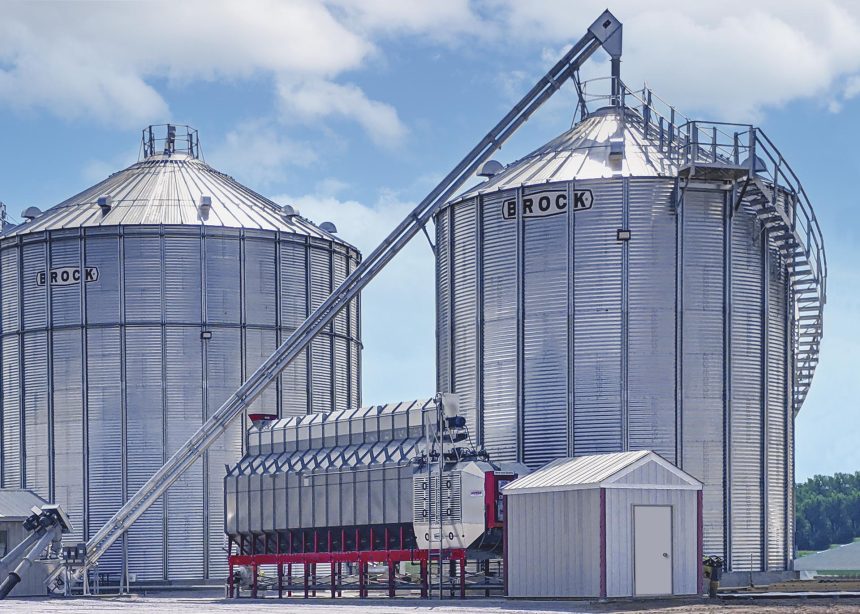Your grain storage and handling system may be telling you that it’s time to consider a new way to move grain, according to Tyler Ginder, Product Manager of Handling Systems for Brock Grain Systems. Whether you are upgrading from an auger or replacing a drag conveyor, there are sure signs indicating when you should change to a tube conveyor for loading and unloading dryers and bins.
- You have an auger that can’t keep up with your grain handling needs.
If you have a u-trough or traditional screw-type auger, it may be a bottleneck in your system that limits how much or how fast you can load or unload grain. Many augers have capacities that top out at 5,000 bushels per hour (BPH). Generally, tube conveyors allow for capacities up to 10,000 BPH.
- You need the capacity of a drag conveyor, but don’t have room for the supporting structure.
Drag conveyors are ideal for moving large quantities of grain, but these conveyors often require additional supporting structures (towers or catwalks) due to a maximum free span distance of 10-20 feet. Tube conveyors can free span distances of up to 40 feet, reducing the need for additional supporting structures. This allows for tube conveyors to be installed in systems where there isn’t room to add supporting structures. Tube conveyors can move up to 10,000 BPH of grain, and they have a lower initial cost than standard or curved incline drag conveyors.
- You have a tall bin that requires steep inclines for loading.
Tube conveyors accommodate steep inclines of 45 degrees or more, but only if their components and bearings are designed to handle the additional loads and higher horsepower. Look for highly rated, standard parts as well as an ability to upgrade to spherical head bearings when using longer runs or steeper inclines.
- You have grain that is getting damaged in your handling process.
Screw-type roof augers, transfer augers and dryer augers are known to be harder on grain than chain conveying systems. To avoid getting docked for having too many fines and cracked kernels in your loads, many operations are switching to tube conveyors. Their chain-drive drag action moves grain efficiently and gently, and with less energy cost than augers.
Plan now for system expansions and upgrades in 2023.
Ginder recommends that grain system operators plan ahead for new tube conveyor installations in 2023. “A multi-phase plan for your storage system that considers capacities required, conveyor incline angle, and the location of drives and take-ups is the best way to get the right handling system that can accommodate future growth,” he explains.
 About GrainDrive™ Tube Conveyors.
About GrainDrive™ Tube Conveyors.
Brock’s GrainDrive T1000 Tube Conveyors were introduced in 2022 and have become a popular option for grain producers and commercial grain operations. They feature durable components and can be driven from the head or tail section for installation flexibility. Drives and chains are maintained in the same location, which means chain tensioning can be completed from the ground for most applications using tail drives.
GrainDrive Tube Conveyors allow for grain flow capacities up to 10,000 BPH. They are built with strong standard components like Dodge SCM bearings. If an application requires higher horsepower, longer runs or steeper inclines, Brock has the ability to upgrade their conveyors with spherical S2000 head bearings.
See how Brock made a heavy-duty tube conveyor.

